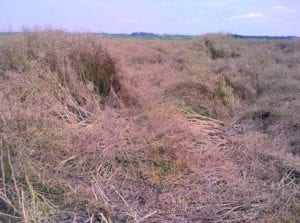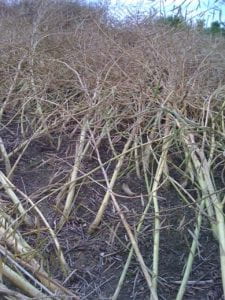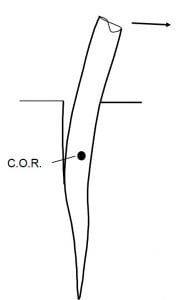The root system of a plant has four main functions:
- Anchorage
- Nutrient acquisition
- Water acquisition
- Storage
Previous studies investigating the function of roots have concentrated on the acquisition of nutrients and water. It is only recently that researchers have started to investigate the mechanical function of roots. In this study the mechanism of anchorage failure in oilseed rape was investigated by combining a morphological and mechanical study of the root system with anchorage tests on real and model plants (Goodman et al., 1998; Goodman et al., 2001).


Results
Oilseed rape plants were anchored by a rigid tap root; the few structurally important laterals all emerged below the centre of rotation of the root system (approx. 3 cm below the soil surface). When plants were pulled over the tap root bent and the top 3 cm moved in the soil towards the direction of pull, creating a crevice on the opposite side. The maximum anchorage moment was 2.9±0.36 N m.


Two main components of anchorage were identified:
- The bending resistance of the tap root
- The resistance of the soil on the near side to lateral compression
The relative importance of these components was determined by both measuring the bending resistance of the tap root, and by measuring the resistance of metal tubes of varying diameter, inserted to varying depths in the soil, to being pulled over.
These tests showed that:
- The tap root accounts for around 40% of anchorage strength.
- And the soil resistance accounts for around 60% of anchorage strength.
The model tests on the tubes also helps to shed light on the way in which the dimensions of tap roots will influence their anchorage capability.
Future work
These results help us to identify the important components of anchorage in oilseed rape which may in turn be selected for in the breeding of new varieties.
Authors: A.M. Goodman, University of Lincoln; M.J. Crook, Harper Adams Agricultural College; A.R. Ennos, University of Manchester.